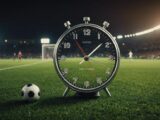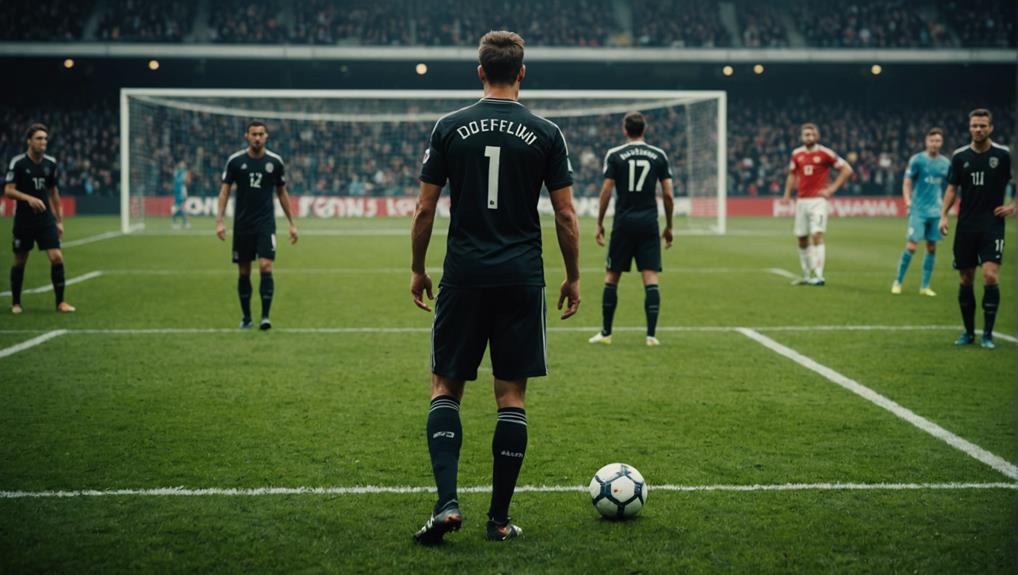
How Many Players on a Soccer Field?
April 26, 2024In soccer, there are 22 players on the field with 11 players on each team. Defenders stop goals, midfielders control the game, forwards score, and goalkeepers guard the goal. Different strategies like 4-4-2 or 4-3-3 organize players. Coaches change formations for an edge. Learn more about player roles and how they impact the game.
Total Players on Soccer Field
In a standard 11v11 soccer match, there are a total of 22 players on the field. The game of soccer revolves around these 22 individuals who come together to showcase their skills, teamwork, and strategy. Each team consists of 11 players who work in unison to move the ball across the field, defend their territory, and ultimately score goals. Players on the field must be agile, quick-thinking, and possess excellent ball control to navigate through the game successfully.
The soccer field is where all the action takes place, with players constantly on the move, trying to outplay their opponents. The ball is passed back and forth, players make runs, and tackles are made to gain possession. As the game progresses, players must adapt to the ever-changing dynamics of the match, using their individual strengths to contribute to the team's overall performance. With 22 players on the field, each moment holds the potential for a game-changing play that can tip the scales in favor of one team.
Players on Each Soccer Team
Dividing the soccer team into specific player roles is essential for effective coordination and gameplay. Each team comprises 11 players on the field, strategically positioned to execute various duties. Here's a breakdown of the roles on each soccer team:
- Defenders: Defenders form the backline of the team, working to prevent the opposition from scoring goals. Their primary focus is on stopping attacks and regaining possession of the ball.
- Midfielders: Midfielders are the link between the defensive and offensive players. They play an important role in both defending and attacking, controlling the flow of the game and distributing the ball to forwards.
- Forwards: Forwards are responsible for scoring goals. They lead the offensive line, creating scoring opportunities, and putting pressure on the opposing team's defense.
- Goalkeeper: The goalkeeper is the last line of defense, tasked with preventing the ball from entering the goal. They're the only player allowed to use their hands within the penalty area to stop shots on goal.
Understanding these player positions and their functions is essential for a well-rounded and successful team formation.
Field Players Vs. Goalkeeper
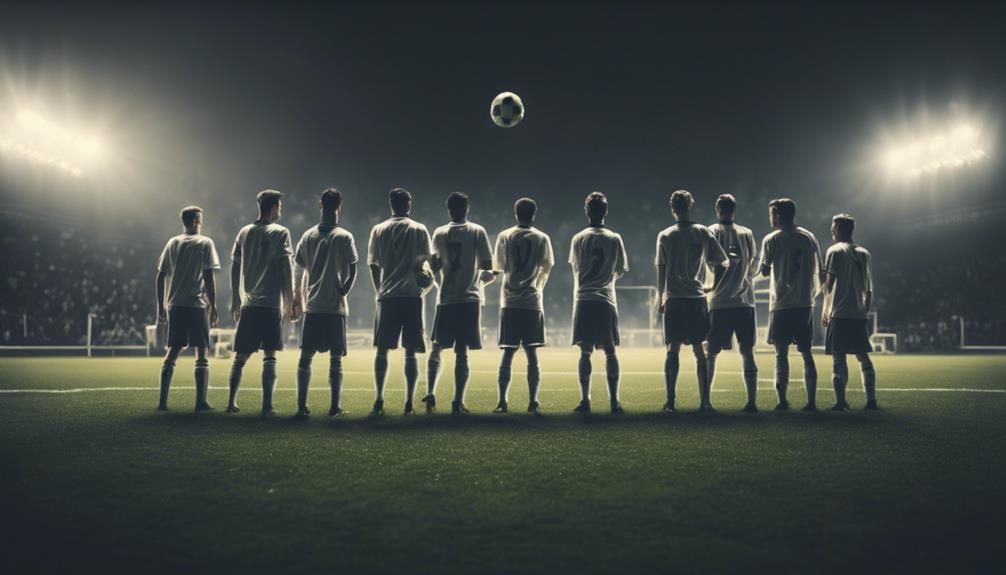
When comparing field players to the goalkeeper, it's important to understand their distinct roles on the soccer field. Field players contribute to all aspects of the game, from attacking to defending, while the goalkeeper stands as the last line of defense against opposing goals.
Recognizing the unique position of the goalkeeper sheds light on the essential balance between offensive and defensive strategies in a match.
Roles on the Field
Understanding the distinct roles of field players and the goalkeeper is essential for effective team coordination and successful gameplay in soccer. Here are the key responsibilities of each position:
- Defenders: Focus on protecting their goal, marking opponents, and intercepting passes to prevent scoring opportunities.
- Midfielders: Work to control the midfield by supporting both defense and attack, distributing the ball, and moving play between defense and attack.
- Forwards: Aim to score goals by creating chances, utilizing their speed and skill to outmaneuver defenders.
- Goalkeeper: Acts as the last line of defense, responsible for blocking shots, organizing the defense, and initiating counterattacks with accurate distribution.
Goalkeeper's Unique Position
As you shift focus to the goalkeeper's unique role compared to field players in soccer, it becomes evident that their position requires specialized skills and responsibilities.
The goalkeeper is the only player allowed to use their hands within the penalty area, a privilege not granted to field players. Wearing a different colored jersey to distinguish themselves, goalkeepers undergo specific training to excel in saving shots and organizing the defense.
Their primary responsibility is to prevent scoring by the opposing team, making vital saves to maintain the team's advantage. Additionally, goalkeepers play a pivotal role in initiating attacks by effectively distributing the ball to teammates, showcasing their versatility and importance in both defensive and offensive strategies on the soccer field.
Formations in Soccer Matches
In soccer matches, various formations dictate the positioning of players on the field, influencing team strategies and gameplay dynamics. Coaches often make tactical changes, adjusting formations to adapt to different game situations. Defensive setups are commonly employed when trying to maintain a lead or control the pace of the match. For instance, in high-stakes games like the World Cup, teams may tailor their formations to counter specific opponents, showcasing the importance of strategic planning and adaptability.
Common soccer formations include 4-4-2, 4-5-1, and 4-3-3, each indicating the number of defenders, midfielders, and forwards on the field. Formations like 4-4-2 consist of 4 defenders, 4 midfielders, and 2 forwards, showcasing a balanced approach to the game. Coaches may use creative variations, such as Jurgen Klinsmann's 4-4-2 diamond midfield setup, to suit specific gameplay strategies. Tactical changes during matches involve adjustments in formations, with defensive setups often used when leading or managing game situations.
Popular Soccer Formations
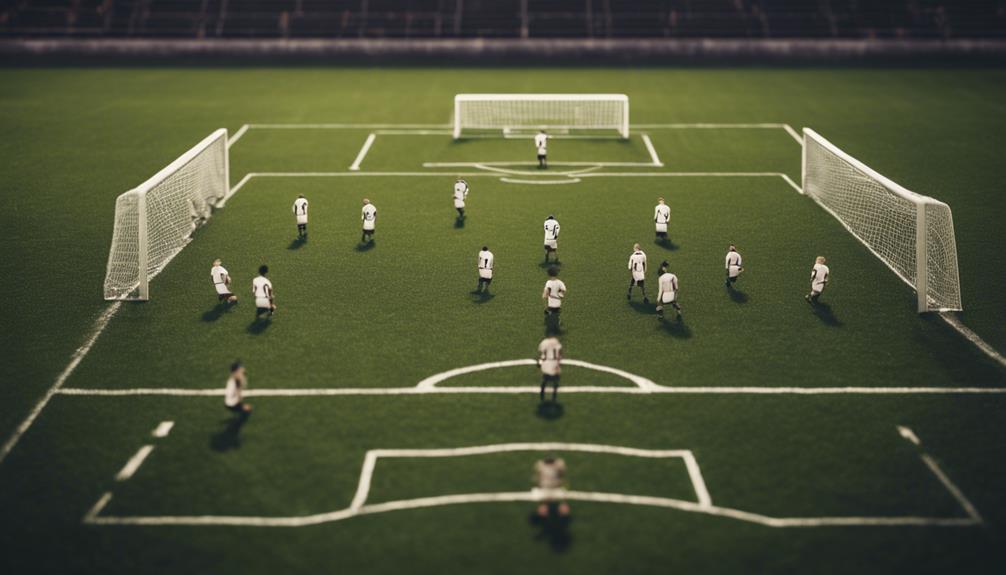
Among the popular soccer formations used by teams worldwide, the 4-4-2, 4-5-1, and 4-3-3 stand out as commonly employed strategies. The 4-4-2 formation is a classic setup with 4 defenders, 4 midfielders, and 2 forwards, providing a balanced structure both defensively and offensively. In contrast, the 4-5-1 is a more defensive formation with an emphasis on midfield presence, while the 4-3-3 formation focuses on deploying more attackers to press the opposition.
Coaches often tweak these formations to suit their team's strengths and exploit the opponent's weaknesses. For example, a diamond midfield within a 4-4-2 can enhance ball control and passing options in the middle of the field. Jurgen Klinsmann, a renowned coach, has shown a preference for the 4-4-2 formation, implementing specific midfield variations to adapt to different game scenarios. Understanding these popular soccer formations can provide insights into how teams structure their midfielders and forwards to achieve tactical advantages on the field.
Adjusting Formations in Soccer
You must be ready to adapt and make quick decisions while adjusting formations in soccer.
Coaches often tweak tactics to maintain defensive solidity or exploit attacking opportunities.
Formation Flexibility
Adjusting formations in soccer provides coaches with the strategic advantage of tailoring their team's tactics to counter opponents effectively and exploit opportunities on the field. Here are some key points to keep in mind regarding formation flexibility:
- Coaches may adjust formations based on the scoreline, implementing defensive strategies when ahead or offensive strategies when behind.
- Substitutions play an important role in changing formations dynamically to gain tactical advantages during a match.
- Modifying formations allows teams to optimize performance and capitalize on the weaknesses of the opposing team.
- Flexibility in player positioning within formations enables strategic adjustments to be made in response to the evolving dynamics of the game.
Tactical Adjustments
Tactical shifts in soccer involve strategic modifications to formations to effectively respond to game dynamics and opponent tactics. Coaches can adjust the number of players on the field and alter defensive formations based on the scoreline and game situation.
Substitutions play a vital role in implementing tactical adjustments, injecting fresh energy or specific skill sets. Formations aren't set in stone; they can be tweaked on the fly to counter the opponent's strategies and exploit weaknesses.
Flexibility in player positioning allows for seamless adjustments to maintain a competitive edge. Understanding the opponent's tactics is key in making swift and effective adjustments to stay ahead in the game.
Defenders, Midfielders, Forwards
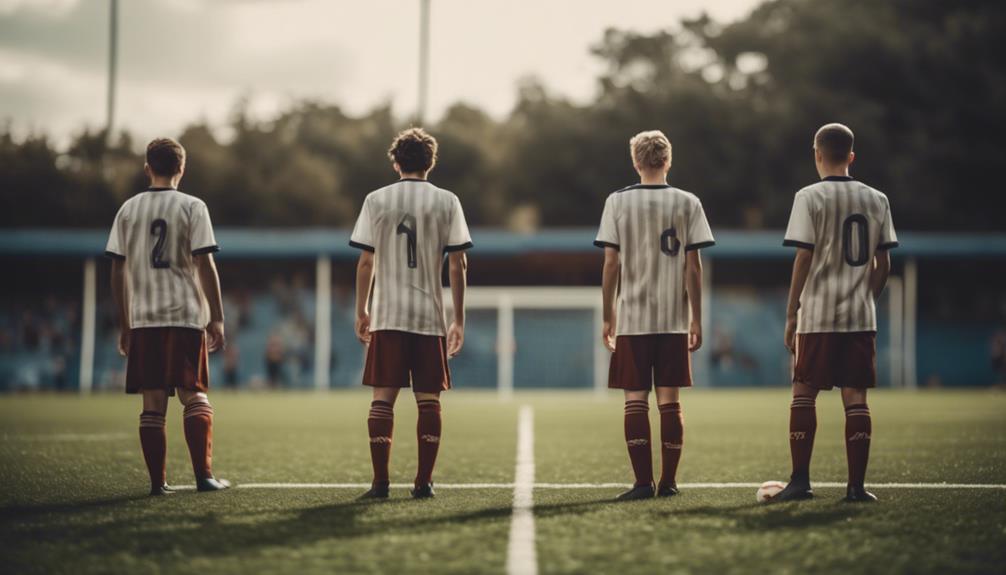
Defenders, midfielders, and forwards play distinct roles on a soccer field, each contributing uniquely to their team's performance. Here's what each position focuses on:
- Defenders: Defenders aim to prevent the opposing team from scoring by blocking shots, intercepting passes, and maintaining a solid defensive line. They're vital in protecting the goal and ensuring that the opposition doesn't penetrate deep into their defensive third. Defenders also play a role in initiating attacks from the back by distributing the ball to the midfielders.
- Midfielders: Midfielders act as the link between defense and offense, controlling the flow of the game in the middle third of the field. They're responsible for winning possession, distributing the ball to forwards, and supporting the defensive line when needed. Midfielders play a versatile role, requiring them to be adept at both attacking and defending.
- Forwards: Forwards are primarily focused on scoring goals for their team. They apply pressure on the opposition's defense, create goal-scoring opportunities, and execute shots on target. Their positioning and movement in the opponent's half are essential for breaking through the defense and converting chances into goals.
Goalkeeper's Role in Soccer
Within the dynamic game of soccer, the goalkeeper's role stands out as essential in preventing the opposing team from scoring. As the only player permitted to use their hands within the penalty area, goalkeepers play a significant part in blocking shots on goal. They equip themselves with gloves to enhance their ability to catch and deflect the ball effectively.
Communication is key for goalkeepers; they interact with teammates to organize the defense and maintain a clear view of the field. Quick reflexes, agility, and sharp decision-making skills are crucial for goalkeepers to excel in their position. Their role goes beyond just stopping shots; they act as the backbone of the team, providing stability and confidence to the players in front of them.
A goalkeeper's presence is felt not only in their saves but also in the way they command the defense and lead their team towards success.
Strategies for Soccer Coaches
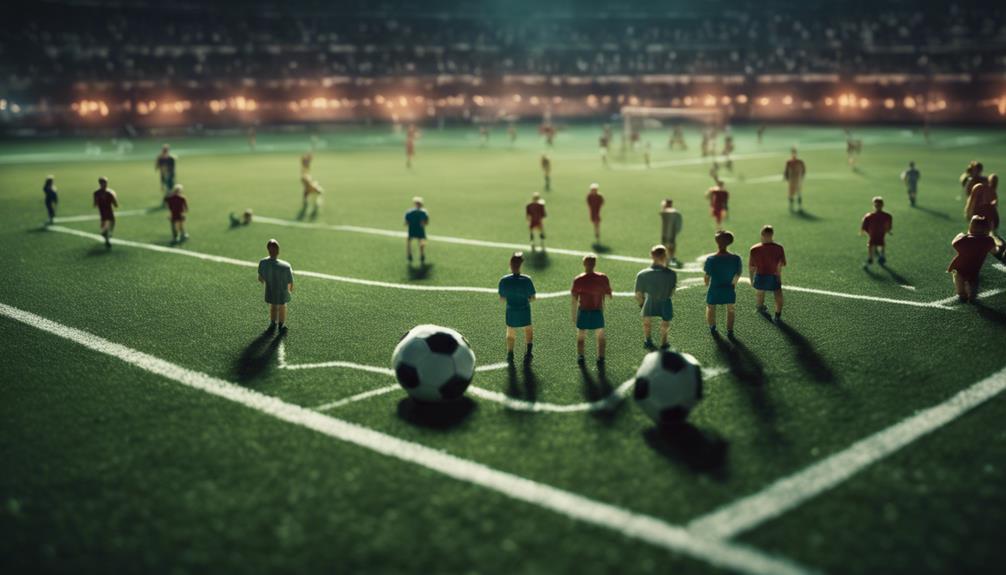
When coaching soccer, crafting tailored formations based on team strengths and opponent analysis is an essential aspect of strategic planning. As a coach, you hold the key to maximizing your team's full potential by implementing effective strategies.
Here are some vital strategies for soccer coaches to contemplate:
- Tactical Adjustments: Being able to adapt your team's defensive formations when leading in a match can be pivotal to maintaining the advantage.
- Substitutions: Making timely substitutions can provide your team with the necessary tactical advantages to secure a win.
- Coaching Philosophy: Your coaching philosophy should guide your formation choices and reflect the strategic decisions you make during games.
- Red Card Scenarios: When a red card is given, having contingency plans and prepared formations can help your team navigate playing with a numerical disadvantage effectively.
Conclusion
So there you have it, buddy! There are 11 players on each soccer team, including one goalkeeper.
The formations teams use can vary, but ultimately it's all about working together on the field. Whether you're a defender, midfielder, forward, or the goalie, each player plays an essential role in the game.
Keep practicing those strategies and you'll be scoring goals in no time! It's all about teamwork, dude!

